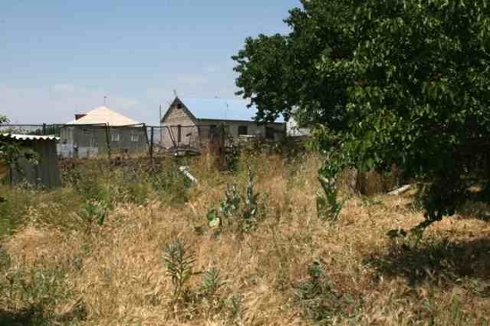Presidents Summer Fellowship, Connecting to Armenian Artists Part 3, Knar Hovakimyan

Let's talk translation.
I was really surprised to find that the most difficult part of the translation process was reading the poems. This task seemed easiest at first, but when I actually set out to produce a literal translation of a poem, I found myself completely lost. For a while I thought that my Armenian language skills were just not up to par, but I soon realized that the difficulty was not in understanding the meaning of the words, but uncovering their role within the line and within the whole poem. I had to think deeply about what the author of the poem intended with each word since soon I would become the author of the translation, and ideally I would have the same intentions. So the first step was deep reading and analysis to produce a literal translation.
What does the literal translation look like? Below is an example of the literal translation I did for Armen Shekoyan's poem "The Crow" from his children's book The Traveller Sun.
The Crow
Cawed cawed the crow
All year in our yard
My grandma said "The crow
brings bad things."
He cawed and cawed in our yard
He cawed here and there
He saw he was bringing nothing
He flew went elsewhere
This is a useful start, but far from the end goal. At this point, I need to work on the English, so I put the original poem away and try to get my translation to start looking like English instead of Translationese. Here is an example of where it might go from there:
The Crow
The crow cawed and cawed
All year in our yard
My grandma said "The crow
brings bad luck."
He cawed and cawed in our yard
He cawed here and there
He saw he brought nothing here
He flew off elsewhere.
Now it sounds like English but not quite like a poem. So I turn back to the original work for more analysis and decisions. Does the poem rhyme? Does it have rhythm? Alliteration? Am I going to maintain any of it? In Armenian, each line of this poem has seven syllables and the poem has a rhyme scheme of ABAB CDCD. I decided that stress patterns did not play a strong role in this poem and focused on rhyme and syllables instead. At this point, I usually need to take a break. Trying to add poetical form to the translations requires a lot of creative thinking and I find it most useful to step away for a few days or a week or so at a time and look at it with fresh eyes. After working on and off throughout a couple weeks, I usually end up with something I'm happy with. Here is my final translation of "The Crow" :
The Crow
Cawing and cawing, the crow
Was perched in our yard all year.
My grandma told me "The crow
Will bring bad luck over here."
He cawed and cawed the whole year,
He cawed over here and there.
He saw he brought nothing here,
So he just flew off elsewhere.
A lot has changed from the previous draft. In order to maintain syllable count and rhyme, I played with the structure of the piece. Translating poetry means constantly making the decision whether to prioritize form or content in any given line of the poem. One of the hardest aspects of translating was trusting myself to make these decisions. (It helped that I was able to send my translations to the poets for approval). Despite the slight changes in content, this final version is a better representation of the original poem than the literal translation.
The photo above is a picture of the backyard at my grandpa's house in his village called Zar. I imagine the crow from this poem to be somewhere like this. Having the opportunity to travel the country helped me to connect to the poems on a deeper level than I otherwise would have. I'm so glad to have been able to reconnect with my culture, to share it with the Reed community, and expand the reach of these talented poets.
Tags: psf, presidents summer fellowship, translation, armenia, poetry, international travel, literature, art
